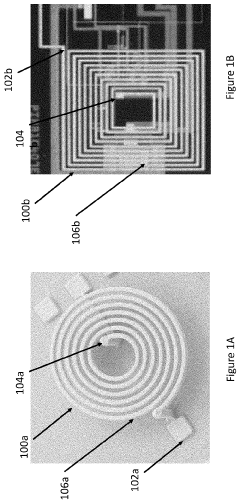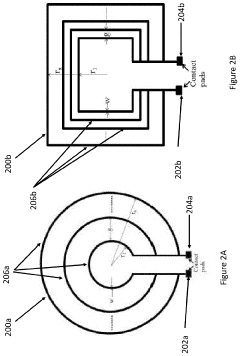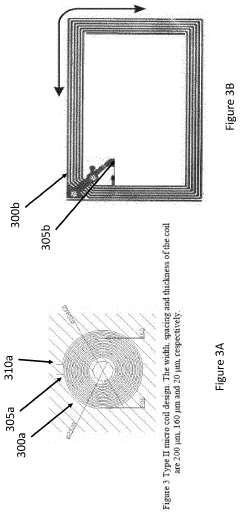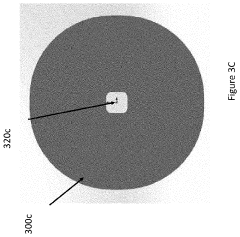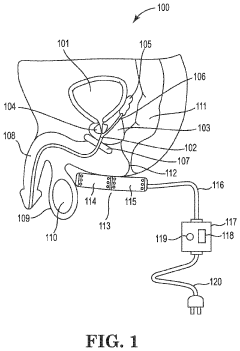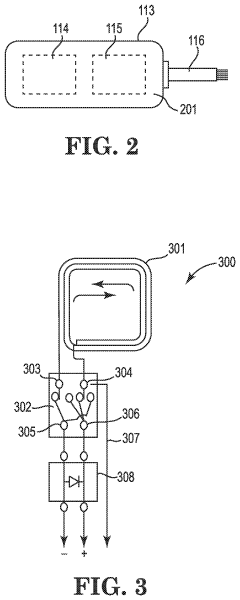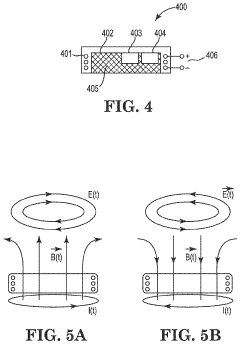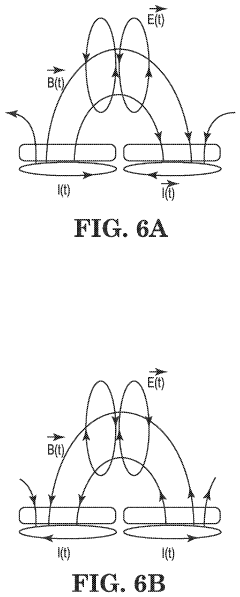The Role of PEMF Therapy in Neuromuscular Disorders
AUG 11, 20259 MIN READ
Generate Your Research Report Instantly with AI Agent
Patsnap Eureka helps you evaluate technical feasibility & market potential.
PEMF in Neuromuscular Disorders: Background and Objectives
Pulsed Electromagnetic Field (PEMF) therapy has emerged as a promising non-invasive treatment modality in the field of neuromuscular disorders. This technology, which utilizes electromagnetic fields to stimulate cellular repair and regeneration, has garnered significant attention in recent years due to its potential to address a wide range of neurological and muscular conditions.
The historical development of PEMF therapy can be traced back to the mid-20th century, with early applications focusing on bone healing and pain management. However, its potential in treating neuromuscular disorders has only been recognized and explored more extensively in the past few decades. This shift in focus has been driven by advancements in our understanding of cellular biology and the role of electromagnetic fields in biological processes.
Neuromuscular disorders encompass a diverse group of conditions that affect the functioning of muscles and their controlling nerves. These disorders can result from various factors, including genetic mutations, autoimmune responses, and environmental influences. The complexity and diversity of these conditions have long posed significant challenges in developing effective treatment strategies.
The primary objective of PEMF therapy in the context of neuromuscular disorders is to modulate cellular activity and promote tissue repair. By generating pulsed electromagnetic fields, this therapy aims to influence various physiological processes at the cellular level, including ion transport, cell membrane permeability, and mitochondrial function. These effects are hypothesized to contribute to improved muscle function, reduced inflammation, and enhanced nerve signaling.
Current research in PEMF therapy for neuromuscular disorders is focused on several key areas. These include optimizing treatment parameters such as field strength, frequency, and duration to maximize therapeutic efficacy while ensuring patient safety. Additionally, there is a growing interest in understanding the molecular mechanisms underlying the observed clinical benefits of PEMF therapy.
The potential applications of PEMF therapy in neuromuscular disorders are vast and diverse. Conditions such as muscular dystrophy, amyotrophic lateral sclerosis (ALS), peripheral neuropathy, and myasthenia gravis are among the targets of ongoing research. The non-invasive nature of PEMF therapy, coupled with its potential for home-based application, makes it an attractive option for long-term management of chronic neuromuscular conditions.
As we delve deeper into the role of PEMF therapy in neuromuscular disorders, it is crucial to critically evaluate the existing evidence, identify knowledge gaps, and outline future research directions. This comprehensive analysis will provide a foundation for assessing the potential of PEMF therapy to revolutionize the treatment landscape for neuromuscular disorders and improve the quality of life for affected individuals.
The historical development of PEMF therapy can be traced back to the mid-20th century, with early applications focusing on bone healing and pain management. However, its potential in treating neuromuscular disorders has only been recognized and explored more extensively in the past few decades. This shift in focus has been driven by advancements in our understanding of cellular biology and the role of electromagnetic fields in biological processes.
Neuromuscular disorders encompass a diverse group of conditions that affect the functioning of muscles and their controlling nerves. These disorders can result from various factors, including genetic mutations, autoimmune responses, and environmental influences. The complexity and diversity of these conditions have long posed significant challenges in developing effective treatment strategies.
The primary objective of PEMF therapy in the context of neuromuscular disorders is to modulate cellular activity and promote tissue repair. By generating pulsed electromagnetic fields, this therapy aims to influence various physiological processes at the cellular level, including ion transport, cell membrane permeability, and mitochondrial function. These effects are hypothesized to contribute to improved muscle function, reduced inflammation, and enhanced nerve signaling.
Current research in PEMF therapy for neuromuscular disorders is focused on several key areas. These include optimizing treatment parameters such as field strength, frequency, and duration to maximize therapeutic efficacy while ensuring patient safety. Additionally, there is a growing interest in understanding the molecular mechanisms underlying the observed clinical benefits of PEMF therapy.
The potential applications of PEMF therapy in neuromuscular disorders are vast and diverse. Conditions such as muscular dystrophy, amyotrophic lateral sclerosis (ALS), peripheral neuropathy, and myasthenia gravis are among the targets of ongoing research. The non-invasive nature of PEMF therapy, coupled with its potential for home-based application, makes it an attractive option for long-term management of chronic neuromuscular conditions.
As we delve deeper into the role of PEMF therapy in neuromuscular disorders, it is crucial to critically evaluate the existing evidence, identify knowledge gaps, and outline future research directions. This comprehensive analysis will provide a foundation for assessing the potential of PEMF therapy to revolutionize the treatment landscape for neuromuscular disorders and improve the quality of life for affected individuals.
Market Analysis for PEMF in Neurological Treatments
The market for Pulsed Electromagnetic Field (PEMF) therapy in neurological treatments has shown significant growth potential in recent years. This emerging technology has garnered attention from healthcare providers, patients, and investors alike due to its non-invasive nature and promising results in managing various neuromuscular disorders.
The global PEMF therapy market, with a focus on neurological applications, is expected to experience robust growth over the next decade. This growth is primarily driven by the increasing prevalence of neurological disorders, an aging population, and a growing demand for alternative treatment options with fewer side effects compared to traditional pharmacological interventions.
North America currently leads the market for PEMF therapy in neurological treatments, followed by Europe and Asia-Pacific. The United States, in particular, has seen a surge in adoption rates, partly due to the FDA's clearance of several PEMF devices for specific neurological indications. European countries, especially Germany and the United Kingdom, have also shown significant interest in PEMF technology for neurological applications.
The market landscape is characterized by a mix of established medical device manufacturers and innovative start-ups. Key players are investing heavily in research and development to expand the applications of PEMF therapy in neurology. This has led to a pipeline of new devices and treatment protocols targeting conditions such as Parkinson's disease, multiple sclerosis, and peripheral neuropathy.
Consumer awareness and acceptance of PEMF therapy for neurological conditions are on the rise, driven by positive clinical outcomes and increased marketing efforts. However, reimbursement policies and regulatory approvals remain significant factors influencing market growth. As more clinical evidence accumulates, it is anticipated that insurance coverage for PEMF treatments will improve, further boosting market expansion.
The COVID-19 pandemic has had a mixed impact on the PEMF therapy market. While it initially caused disruptions in supply chains and clinical trials, the pandemic has also accelerated the adoption of home-based medical technologies, potentially benefiting portable PEMF devices for neurological care.
Looking ahead, the market for PEMF therapy in neurological treatments is poised for continued growth. Technological advancements, such as the integration of artificial intelligence for personalized treatment protocols, are expected to drive innovation in this field. Additionally, the increasing focus on preventive healthcare and wellness may open up new market segments for PEMF therapy beyond traditional clinical settings.
The global PEMF therapy market, with a focus on neurological applications, is expected to experience robust growth over the next decade. This growth is primarily driven by the increasing prevalence of neurological disorders, an aging population, and a growing demand for alternative treatment options with fewer side effects compared to traditional pharmacological interventions.
North America currently leads the market for PEMF therapy in neurological treatments, followed by Europe and Asia-Pacific. The United States, in particular, has seen a surge in adoption rates, partly due to the FDA's clearance of several PEMF devices for specific neurological indications. European countries, especially Germany and the United Kingdom, have also shown significant interest in PEMF technology for neurological applications.
The market landscape is characterized by a mix of established medical device manufacturers and innovative start-ups. Key players are investing heavily in research and development to expand the applications of PEMF therapy in neurology. This has led to a pipeline of new devices and treatment protocols targeting conditions such as Parkinson's disease, multiple sclerosis, and peripheral neuropathy.
Consumer awareness and acceptance of PEMF therapy for neurological conditions are on the rise, driven by positive clinical outcomes and increased marketing efforts. However, reimbursement policies and regulatory approvals remain significant factors influencing market growth. As more clinical evidence accumulates, it is anticipated that insurance coverage for PEMF treatments will improve, further boosting market expansion.
The COVID-19 pandemic has had a mixed impact on the PEMF therapy market. While it initially caused disruptions in supply chains and clinical trials, the pandemic has also accelerated the adoption of home-based medical technologies, potentially benefiting portable PEMF devices for neurological care.
Looking ahead, the market for PEMF therapy in neurological treatments is poised for continued growth. Technological advancements, such as the integration of artificial intelligence for personalized treatment protocols, are expected to drive innovation in this field. Additionally, the increasing focus on preventive healthcare and wellness may open up new market segments for PEMF therapy beyond traditional clinical settings.
Current PEMF Technology and Challenges in Neuromuscular Applications
Pulsed Electromagnetic Field (PEMF) therapy has emerged as a promising non-invasive treatment modality for various neuromuscular disorders. Current PEMF technology utilizes low-frequency electromagnetic fields to stimulate cellular repair and regeneration. The most common devices employ coils or mats that generate pulsed magnetic fields, which can penetrate deep into tissues and organs.
In neuromuscular applications, PEMF devices typically operate at frequencies ranging from 1 Hz to 100 Hz, with field strengths varying from 0.1 to 20 mT. These parameters are crucial for targeting specific physiological responses in neuromuscular tissues. Advanced PEMF systems now incorporate programmable waveforms and adjustable intensity settings, allowing for more personalized treatment protocols.
Despite the progress in PEMF technology, several challenges persist in its application to neuromuscular disorders. One significant hurdle is the lack of standardization in treatment protocols. The optimal frequency, intensity, and duration of PEMF therapy for different neuromuscular conditions remain unclear, leading to inconsistent results across studies and clinical applications.
Another challenge lies in the development of more targeted PEMF delivery systems. Current technologies often provide broad-field stimulation, which may limit their efficacy in treating localized neuromuscular issues. Researchers are exploring ways to create more focused PEMF applications, such as using shaped magnetic fields or combining PEMF with other technologies like ultrasound guidance.
The miniaturization and portability of PEMF devices present both opportunities and challenges. While smaller, wearable devices offer greater convenience for patients, they often struggle to generate the same field strengths as larger, stationary units. Balancing power output with device size and battery life remains an ongoing engineering challenge.
Furthermore, the mechanism of action of PEMF therapy in neuromuscular disorders is not fully understood. While studies have shown effects on cellular processes such as ion transport, gene expression, and protein synthesis, the precise pathways by which PEMF influences neuromuscular function require further elucidation. This knowledge gap hampers the optimization of PEMF parameters for specific conditions.
Lastly, the long-term effects and safety profile of PEMF therapy, particularly in chronic neuromuscular disorders, need more comprehensive investigation. While short-term studies have demonstrated promising results with minimal side effects, the impact of prolonged PEMF exposure on neuromuscular tissues and overall health requires further research to ensure its safety and efficacy as a long-term treatment option.
In neuromuscular applications, PEMF devices typically operate at frequencies ranging from 1 Hz to 100 Hz, with field strengths varying from 0.1 to 20 mT. These parameters are crucial for targeting specific physiological responses in neuromuscular tissues. Advanced PEMF systems now incorporate programmable waveforms and adjustable intensity settings, allowing for more personalized treatment protocols.
Despite the progress in PEMF technology, several challenges persist in its application to neuromuscular disorders. One significant hurdle is the lack of standardization in treatment protocols. The optimal frequency, intensity, and duration of PEMF therapy for different neuromuscular conditions remain unclear, leading to inconsistent results across studies and clinical applications.
Another challenge lies in the development of more targeted PEMF delivery systems. Current technologies often provide broad-field stimulation, which may limit their efficacy in treating localized neuromuscular issues. Researchers are exploring ways to create more focused PEMF applications, such as using shaped magnetic fields or combining PEMF with other technologies like ultrasound guidance.
The miniaturization and portability of PEMF devices present both opportunities and challenges. While smaller, wearable devices offer greater convenience for patients, they often struggle to generate the same field strengths as larger, stationary units. Balancing power output with device size and battery life remains an ongoing engineering challenge.
Furthermore, the mechanism of action of PEMF therapy in neuromuscular disorders is not fully understood. While studies have shown effects on cellular processes such as ion transport, gene expression, and protein synthesis, the precise pathways by which PEMF influences neuromuscular function require further elucidation. This knowledge gap hampers the optimization of PEMF parameters for specific conditions.
Lastly, the long-term effects and safety profile of PEMF therapy, particularly in chronic neuromuscular disorders, need more comprehensive investigation. While short-term studies have demonstrated promising results with minimal side effects, the impact of prolonged PEMF exposure on neuromuscular tissues and overall health requires further research to ensure its safety and efficacy as a long-term treatment option.
Existing PEMF Protocols for Neuromuscular Disorders
01 PEMF devices for therapeutic applications
Pulsed Electromagnetic Field (PEMF) therapy devices are designed for various therapeutic applications. These devices generate electromagnetic fields to stimulate cellular repair and regeneration, potentially treating a wide range of conditions including pain, inflammation, and bone healing.- PEMF devices for therapeutic applications: Pulsed Electromagnetic Field (PEMF) therapy devices are designed for various therapeutic applications. These devices generate electromagnetic fields to stimulate cellular activity and promote healing. They can be used for pain management, tissue repair, and improving overall well-being.
- PEMF therapy for specific medical conditions: PEMF therapy is utilized to treat specific medical conditions. It has shown efficacy in managing chronic pain, reducing inflammation, accelerating bone healing, and improving circulation. The therapy can be tailored to address various health issues by adjusting the frequency and intensity of the electromagnetic fields.
- Portable and wearable PEMF devices: Advancements in PEMF technology have led to the development of portable and wearable devices. These compact units allow for convenient at-home use or on-the-go treatments. Wearable PEMF devices can be integrated into clothing or accessories, enabling continuous therapy throughout daily activities.
- Combination of PEMF with other therapies: PEMF therapy is often combined with other treatment modalities to enhance therapeutic outcomes. Integration with light therapy, heat therapy, or traditional medicine can provide synergistic effects. This combinatorial approach aims to optimize healing and recovery processes for various conditions.
- PEMF technology advancements and control systems: Ongoing research focuses on improving PEMF technology and control systems. This includes developing more precise field generation methods, optimizing treatment protocols, and creating user-friendly interfaces. Advanced control systems allow for personalized therapy settings and treatment tracking.
02 PEMF therapy for pain management and tissue healing
PEMF therapy is utilized for pain management and tissue healing. The electromagnetic fields generated by PEMF devices can help reduce pain, improve circulation, and accelerate the healing process in various tissues, including muscles, bones, and soft tissues.Expand Specific Solutions03 Portable and wearable PEMF devices
Advancements in PEMF technology have led to the development of portable and wearable devices. These compact units allow for convenient, on-the-go treatment, enabling patients to receive therapy while performing daily activities or during sleep.Expand Specific Solutions04 PEMF therapy in veterinary and agricultural applications
PEMF therapy has expanded beyond human applications to include veterinary and agricultural uses. The technology is being applied to treat animals and enhance plant growth, showcasing its versatility in promoting cellular health across different organisms.Expand Specific Solutions05 Integration of PEMF with other therapies and technologies
PEMF therapy is being integrated with other treatment modalities and technologies to enhance its effectiveness. This includes combining PEMF with light therapy, thermal therapy, or incorporating it into advanced medical devices for more comprehensive treatment approaches.Expand Specific Solutions
Key Players in PEMF Neuromuscular Research and Development
The field of PEMF therapy in neuromuscular disorders is in a growth phase, with increasing market size and technological advancements. The global market for PEMF devices is expanding, driven by rising awareness of non-invasive treatment options. Companies like Regenesis Biomedical and Biomagnetic Sciences are at the forefront, developing innovative devices such as the Provant Therapy System and NovoPulse MKX-1. The technology's maturity is progressing, with firms like SofPulse and Medrelief contributing to its evolution. While PEMF therapy shows promise, it's still emerging in neuromuscular applications, with ongoing research and development efforts by companies and institutions like the National University of Singapore and ETH Zurich pushing the boundaries of its efficacy and applications.
Regenesis Biomedical, Inc.
Technical Solution: Regenesis Biomedical has developed the Provant Therapy System, a non-invasive PEMF device specifically designed for neuromuscular disorders. The system utilizes a proprietary pulsed radiofrequency energy technology that operates at 27.12 MHz[1]. This frequency has been shown to penetrate deep into tissues, stimulating cellular repair and reducing inflammation. The device delivers targeted electromagnetic pulses to affected areas, promoting tissue healing and pain relief. Clinical studies have demonstrated significant improvements in pain scores and functional outcomes for patients with various neuromuscular conditions, including peripheral neuropathy and muscle strains[2][3].
Strengths: FDA-cleared device, non-invasive treatment, targeted therapy for specific neuromuscular disorders. Weaknesses: Limited to localized treatment areas, may require multiple sessions for optimal results.
SofPulse, Inc.
Technical Solution: SofPulse has developed a portable PEMF therapy device that utilizes Targeted Pulsed Electromagnetic Field (tPEMF) technology. The device emits low-frequency electromagnetic pulses in the range of 1-30 Hz, which have been shown to be effective in reducing inflammation and promoting tissue repair[4]. SofPulse's technology is designed to be user-friendly and can be applied directly to affected areas for extended periods. The company has conducted clinical trials demonstrating the efficacy of their device in reducing pain and improving function in patients with various neuromuscular disorders, including fibromyalgia and chronic low back pain[5]. The compact design allows for home use, potentially increasing treatment adherence and long-term outcomes.
Strengths: Portable and user-friendly design, suitable for home use, clinically proven efficacy. Weaknesses: May require longer treatment durations compared to higher-frequency devices, limited to superficial tissue penetration.
Breakthrough PEMF Studies in Neuromuscular Therapy
Pulsed Electromagnetic Field Devices Integrated into Adjustable Clothing
PatentPendingUS20230104434A1
Innovation
- A pulsed electromagnetic field device integrated into wearable clothing, using arrays of planar microcoils that generate controlled, homogenous magnetic fields, allowing for comfortable, long-term use and targeted treatment of various brain-related disorders and conditions.
Method and apparatus for treatment of benign prostatic hyperplasia (BPH)
PatentInactiveUS20230398368A1
Innovation
- A non-invasive method utilizing pulsed electromagnetic field (PEMF) stimulation to increase the number of A2a receptors on cell membranes, enhancing the anti-inflammatory effects of adenosine and providing immunosuppressive action to reduce chronic inflammation and tissue damage in the prostate.
Safety and Regulatory Considerations for PEMF in Neurology
The safety and regulatory considerations for Pulsed Electromagnetic Field (PEMF) therapy in neurology are of paramount importance as this technology gains traction in treating neuromuscular disorders. Regulatory bodies, such as the FDA in the United States and the EMA in Europe, have established guidelines for the use of PEMF devices in medical settings. These guidelines primarily focus on ensuring the safety and efficacy of PEMF devices through rigorous clinical trials and post-market surveillance.
One of the key safety considerations is the potential for electromagnetic interference with other medical devices, particularly implanted electronic devices such as pacemakers or deep brain stimulators. Manufacturers must demonstrate that their PEMF devices do not adversely affect the functioning of these critical medical implants. Additionally, regulatory bodies require comprehensive documentation on the electromagnetic emissions of PEMF devices to ensure compliance with electromagnetic compatibility standards.
The intensity and frequency of the electromagnetic fields used in PEMF therapy are also subject to regulatory scrutiny. While low-intensity PEMF therapy is generally considered safe, higher intensities may pose risks such as tissue heating or unintended stimulation of neural tissue. Regulatory agencies typically require manufacturers to provide detailed specifications of their devices' output parameters and to demonstrate that these parameters fall within safe limits for human exposure.
Long-term safety is another critical aspect of regulatory consideration. As PEMF therapy often involves repeated treatments over extended periods, manufacturers must provide data on the cumulative effects of exposure. This includes assessing potential risks such as changes in cellular function, DNA damage, or alterations in neurotransmitter levels. Longitudinal studies are often required to evaluate these long-term effects and to establish the safety profile of PEMF therapy for chronic use in neurological conditions.
Patient selection criteria and contraindications are also important regulatory considerations. Manufacturers must clearly define the intended patient population and provide guidance on exclusion criteria, such as pregnancy or certain pre-existing medical conditions. This information is crucial for healthcare providers to make informed decisions about the appropriateness of PEMF therapy for individual patients.
Regulatory bodies also emphasize the importance of user training and device labeling. Clear instructions for use, including proper electrode placement and treatment protocols, must be provided to ensure safe and effective application of PEMF therapy. Warning labels and precautions must be prominently displayed on devices and in accompanying documentation to minimize the risk of misuse or adverse events.
One of the key safety considerations is the potential for electromagnetic interference with other medical devices, particularly implanted electronic devices such as pacemakers or deep brain stimulators. Manufacturers must demonstrate that their PEMF devices do not adversely affect the functioning of these critical medical implants. Additionally, regulatory bodies require comprehensive documentation on the electromagnetic emissions of PEMF devices to ensure compliance with electromagnetic compatibility standards.
The intensity and frequency of the electromagnetic fields used in PEMF therapy are also subject to regulatory scrutiny. While low-intensity PEMF therapy is generally considered safe, higher intensities may pose risks such as tissue heating or unintended stimulation of neural tissue. Regulatory agencies typically require manufacturers to provide detailed specifications of their devices' output parameters and to demonstrate that these parameters fall within safe limits for human exposure.
Long-term safety is another critical aspect of regulatory consideration. As PEMF therapy often involves repeated treatments over extended periods, manufacturers must provide data on the cumulative effects of exposure. This includes assessing potential risks such as changes in cellular function, DNA damage, or alterations in neurotransmitter levels. Longitudinal studies are often required to evaluate these long-term effects and to establish the safety profile of PEMF therapy for chronic use in neurological conditions.
Patient selection criteria and contraindications are also important regulatory considerations. Manufacturers must clearly define the intended patient population and provide guidance on exclusion criteria, such as pregnancy or certain pre-existing medical conditions. This information is crucial for healthcare providers to make informed decisions about the appropriateness of PEMF therapy for individual patients.
Regulatory bodies also emphasize the importance of user training and device labeling. Clear instructions for use, including proper electrode placement and treatment protocols, must be provided to ensure safe and effective application of PEMF therapy. Warning labels and precautions must be prominently displayed on devices and in accompanying documentation to minimize the risk of misuse or adverse events.
Cost-Effectiveness of PEMF in Neuromuscular Treatment
The cost-effectiveness of Pulsed Electromagnetic Field (PEMF) therapy in the treatment of neuromuscular disorders is a critical consideration for healthcare providers, patients, and policymakers. This analysis aims to evaluate the economic implications of PEMF therapy compared to conventional treatments for various neuromuscular conditions.
PEMF therapy has shown promising results in managing symptoms and improving quality of life for patients with neuromuscular disorders. However, the initial investment in PEMF devices and the ongoing costs of treatment must be weighed against the potential benefits and long-term savings in healthcare expenditures.
One of the primary advantages of PEMF therapy is its non-invasive nature, which reduces the risk of complications and associated healthcare costs. Compared to surgical interventions or long-term medication regimens, PEMF therapy may offer a more cost-effective alternative for managing chronic neuromuscular conditions.
Studies have demonstrated that PEMF therapy can lead to reduced pain levels, improved mobility, and enhanced overall function in patients with conditions such as multiple sclerosis, Parkinson's disease, and peripheral neuropathy. These improvements can translate into decreased reliance on pain medications, fewer hospital visits, and reduced need for assistive devices, potentially resulting in significant cost savings over time.
The cost-effectiveness of PEMF therapy also extends to its potential to delay disease progression in certain neuromuscular disorders. By slowing the deterioration of nerve and muscle function, PEMF therapy may reduce the need for more expensive interventions in the future, such as advanced surgical procedures or intensive rehabilitation programs.
However, it is important to note that the cost-effectiveness of PEMF therapy can vary depending on the specific neuromuscular disorder being treated and the individual patient's response to the therapy. Some patients may require more frequent or prolonged treatments to achieve optimal results, which could impact the overall cost-effectiveness of the approach.
Additionally, the availability and accessibility of PEMF devices play a role in determining their cost-effectiveness. As technology advances and more manufacturers enter the market, the cost of PEMF devices is likely to decrease, making the therapy more accessible to a broader range of patients and healthcare providers.
In conclusion, while more comprehensive long-term studies are needed to fully assess the cost-effectiveness of PEMF therapy in neuromuscular treatment, initial evidence suggests that it has the potential to offer a cost-effective alternative or complementary approach to conventional treatments. The non-invasive nature, potential for symptom management, and ability to improve quality of life make PEMF therapy an attractive option from both a clinical and economic perspective.
PEMF therapy has shown promising results in managing symptoms and improving quality of life for patients with neuromuscular disorders. However, the initial investment in PEMF devices and the ongoing costs of treatment must be weighed against the potential benefits and long-term savings in healthcare expenditures.
One of the primary advantages of PEMF therapy is its non-invasive nature, which reduces the risk of complications and associated healthcare costs. Compared to surgical interventions or long-term medication regimens, PEMF therapy may offer a more cost-effective alternative for managing chronic neuromuscular conditions.
Studies have demonstrated that PEMF therapy can lead to reduced pain levels, improved mobility, and enhanced overall function in patients with conditions such as multiple sclerosis, Parkinson's disease, and peripheral neuropathy. These improvements can translate into decreased reliance on pain medications, fewer hospital visits, and reduced need for assistive devices, potentially resulting in significant cost savings over time.
The cost-effectiveness of PEMF therapy also extends to its potential to delay disease progression in certain neuromuscular disorders. By slowing the deterioration of nerve and muscle function, PEMF therapy may reduce the need for more expensive interventions in the future, such as advanced surgical procedures or intensive rehabilitation programs.
However, it is important to note that the cost-effectiveness of PEMF therapy can vary depending on the specific neuromuscular disorder being treated and the individual patient's response to the therapy. Some patients may require more frequent or prolonged treatments to achieve optimal results, which could impact the overall cost-effectiveness of the approach.
Additionally, the availability and accessibility of PEMF devices play a role in determining their cost-effectiveness. As technology advances and more manufacturers enter the market, the cost of PEMF devices is likely to decrease, making the therapy more accessible to a broader range of patients and healthcare providers.
In conclusion, while more comprehensive long-term studies are needed to fully assess the cost-effectiveness of PEMF therapy in neuromuscular treatment, initial evidence suggests that it has the potential to offer a cost-effective alternative or complementary approach to conventional treatments. The non-invasive nature, potential for symptom management, and ability to improve quality of life make PEMF therapy an attractive option from both a clinical and economic perspective.
Unlock deeper insights with Patsnap Eureka Quick Research — get a full tech report to explore trends and direct your research. Try now!
Generate Your Research Report Instantly with AI Agent
Supercharge your innovation with Patsnap Eureka AI Agent Platform!
